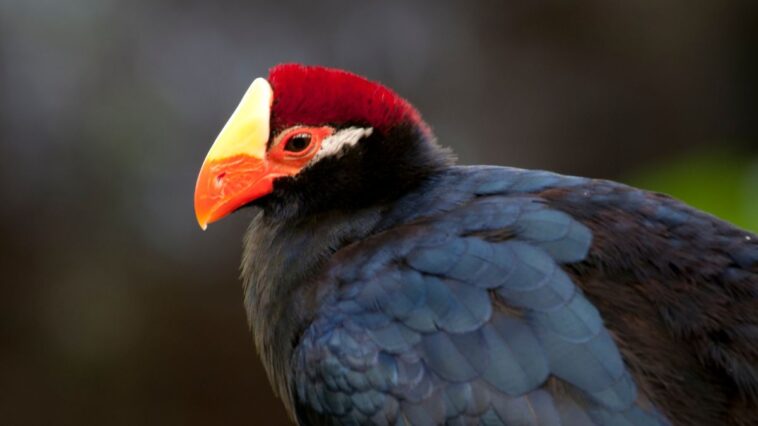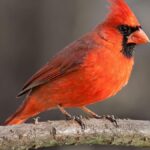With an incredible species diversity, birds come in various colors, shapes, and sizes. One striking feature that catches our attention is their beak, the bill or rostrum. Among the many variations, some birds showcase vibrant orange beaks, adding a touch of brilliance to their appearance. This post presents a curated list of the top 15 birds with orange beaks, highlighting their unique characteristics and showcasing the stunning diversity in the avian world.
The Atlantic Puffin
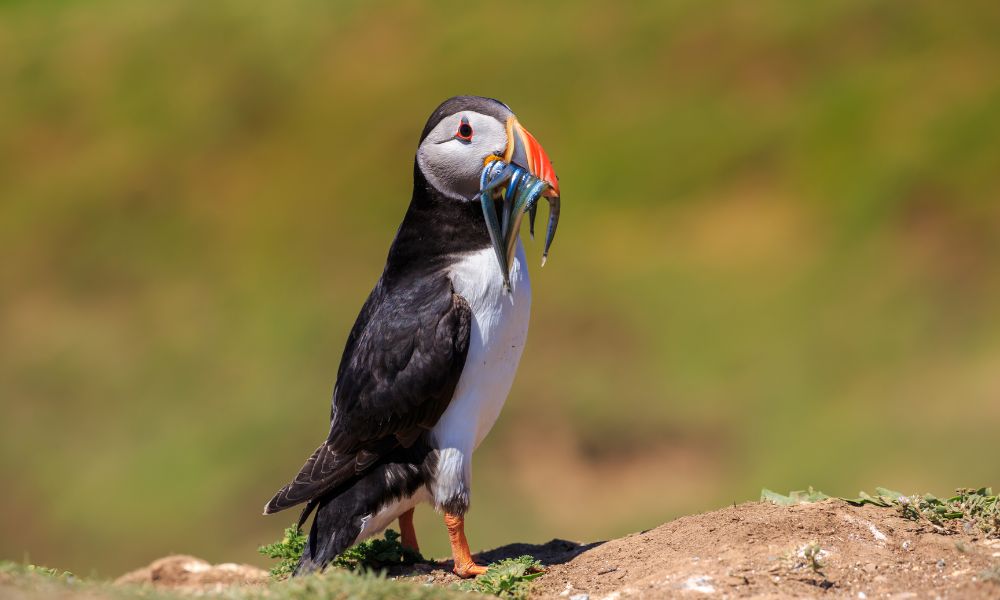
The Atlantic Puffin, also called the common puffin, is a seabird species belonging to the Auk family. These birds primarily feed on fish, sand eels, and herrings. With impressive aerial agility, they can reach up to 55 miles per hour by flapping their wings approximately 400 times per minute. Among the notable predators of the Atlantic Puffin are the black-billed gull and herring gull.
During the mating season, which occurs from April to August, large colonies of Atlantic puffins congregate on their breeding grounds. A remarkable aspect of their behavior is that they form lifelong partnerships and commonly burrow into rocky cliffs or solid ground between rocks for nesting purposes. In the wild, the average lifespan of the Atlantic Puffin is around 20 years.
Sandwich tern
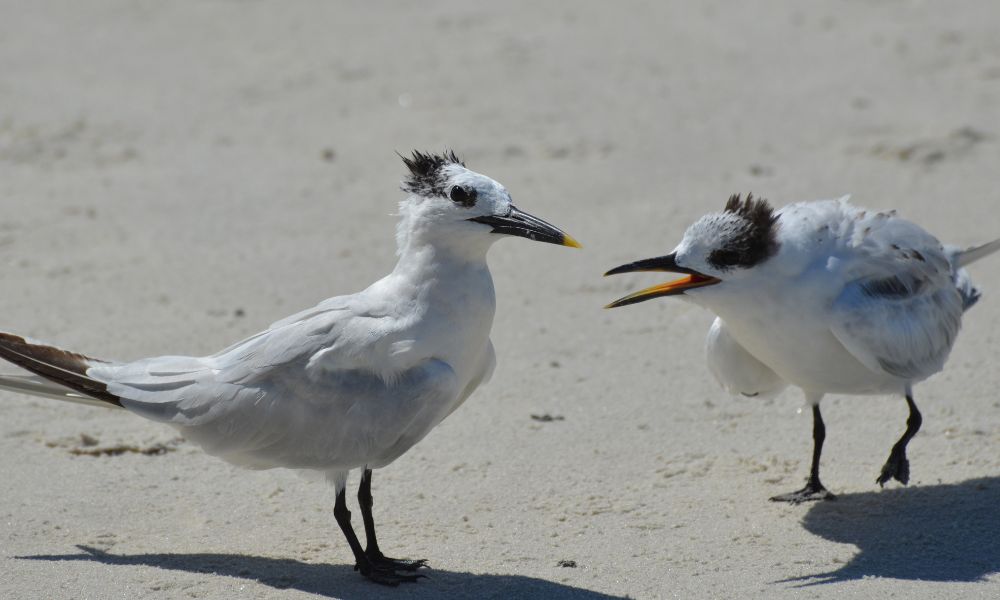
The sandwich tern is a coastal bird belonging to the tern family (Laridae). It is closely related to other tern species, such as the lesser crested and Chinese crested tern. They can be found nesting in colonies along sandy beaches and dunes.
Sandwich terns have grey upperparts, white underparts, and distinctive yellow-tipped black bills. The young birds have grey and brown scalloped plumage on their backs and wings. They grow to about 37-43 cm in length, have an 85-97 cm wingspan, and weigh around 180-300 grams.
These terns breed in Europe, extend to the Caspian Sea, and migrate to South Africa, India, and Sri Lanka during winter. They primarily feed on fish such as sand lance and mullet, shrimp, squid, marine worms, and insects.
Sandwich terns are skilled divers, plunging into the water from the air to catch their prey. They are known for their agility and hovering ability. Their lifespan in the wild is approximately 12 years.
These coastal birds play a crucial role in marine ecosystems, contributing to the balance of food chains and serving as indicators of environmental health. With their graceful flight and striking appearance, sandwich terns are a captivating sight along the coastlines they inhabit.
Toco toucan

The toco toucan, or the common or giant toucan, is a popular bird known for its distinctive appearance and iconic orange beak. It belongs to the toucan family and is native to parts of central and eastern South America.
One of the most striking features of the toco toucan is its enormous bill, which measures between 15.8 to 23 cm in length. The bill has vibrant shades of orange and yellow, adding to the bird’s overall colorful appearance. The toco toucan can grow to a size of 55–65 cm and has an average weight ranging from 500 to 876 grams.
These birds are primarily found in semi-open habitats, particularly in central and eastern South America. They thrive in areas with access to fruit-bearing trees, as their diet mainly consists of fruits. They have a remarkable ability to pluck fruits easily from trees using their large beaks. However, they also feed on other food sources such as insects, frogs, small reptiles, and even small birds and their eggs and nestlings.
The toco toucan’s beak serves several functions besides feeding. It helps with thermoregulation, as the beak has a large surface area that allows the bird to release excess heat. Additionally, the beak is involved in courtship displays and is used for communication among toucans.
With their vibrant colors, unique bill, and lively presence, toco toucans are highly recognized and admired birds in their native habitats and among bird enthusiasts worldwide.
Variable oystercatcher
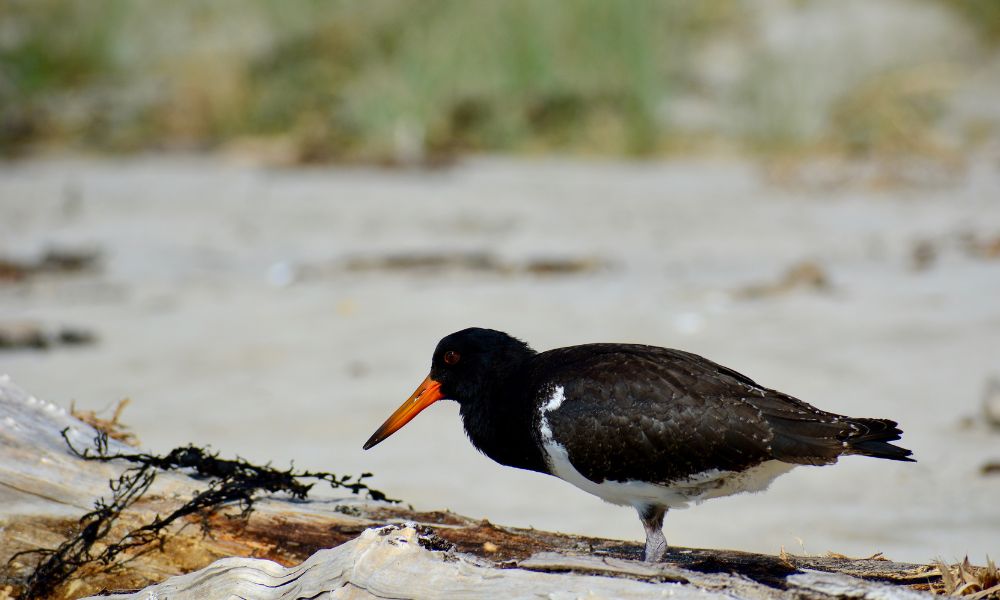
The variable oystercatcher, also known as the torea-pango in Maori, is a bird species belonging to the Haematopodidae family. These shorebirds are native to New Zealand and are characterized by their striking reddish-orange beaks. They have pink legs, an orange eye ring, and a distinctive orange-red beak.
Regarding physical appearance, variable oystercatchers have a compact and robust bodies, with a length ranging from 42 to 47 cm, measured from beak to tail. They possess short, sturdy legs and a thick neck. On average, these birds weigh between 678 and 724 grams.
Variable oystercatchers are commonly found in pairs along the coastlines of New Zealand, particularly on the North, South, and Stewart Islands. They inhabit various coastal habitats and are often seen foraging on sandy beaches, rocky shores, and mudflats.
Their diet mainly consists of a diverse range of prey, including mollusks, crustaceans, worms, small invertebrates, and occasionally small fish. They use their strong beaks to pry open shells and extract their tasty contents.
American White Pelican
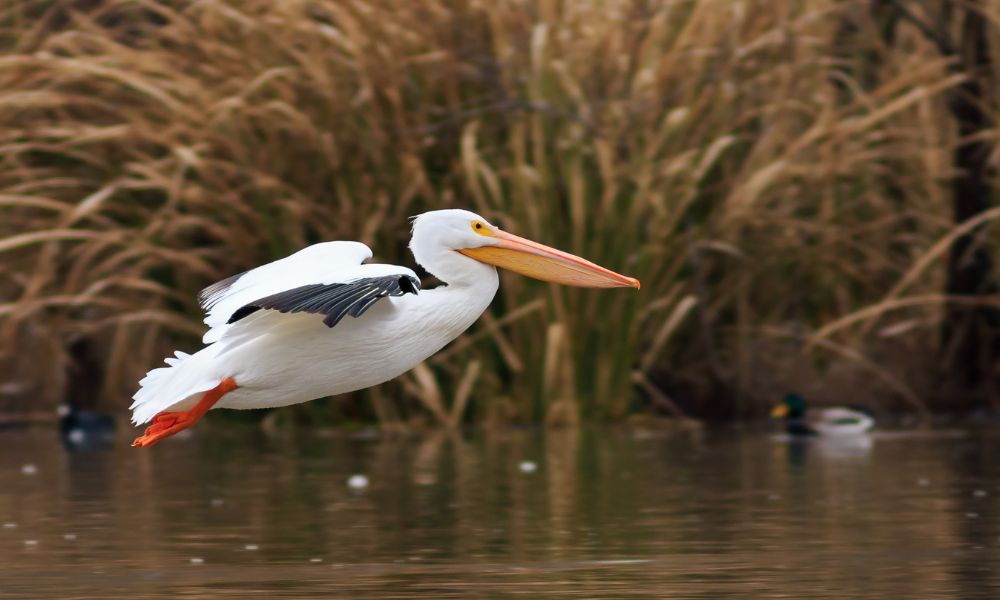
The American white pelican is a large aquatic bird belonging to the order Pelecaniformes. These birds breed in various regions of North America and migrate southwards during winters, reaching the coasts of Central America and South America. They were first described by the German naturalist Johann Friedrich Gmelin in 1789.
The American white pelican is an impressive sight, measuring about 50-70 inches long. It is characterized by its enormous orange beak, which measures around 11.3-15.2 inches in males and 10.3-14.2 inches in females. With a wingspan of 95-120 inches, they possess a graceful and powerful presence.
Fish constitute the primary diet of the American white pelican. They primarily feed on species such as Cypriniformes, including Common carp, Lahontan Tui chub, and shiners. These birds employ a unique feeding technique called “plunge-diving,” they soar high above the water, spot fish below, and dive headfirst to catch their prey.
Malachite Kingfisher
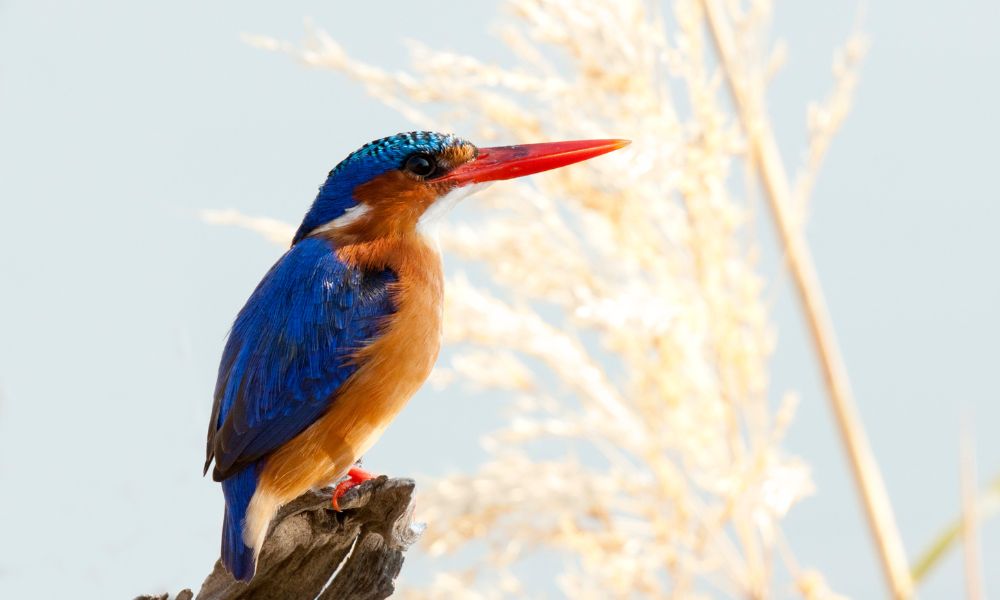
The Malachite Kingfisher is a river kingfisher species commonly found in the regions of Africa south of the Sahara. It was first described by the German naturalist Peter Simon Pallas in 1764 and given the scientific name Alcedo cristata. This vibrant bird measures up to 13 cm in length and is known for its affinity for habitats near slow-moving water or ponds with abundant aquatic vegetation.
With its striking appearance, the Malachite Kingfisher boasts a short crest of black and blue feathers on its head, complemented by metallic blue upper parts. The beak of young birds is black and gradually transitions to a reddish-orange hue in adulthood. Notably, the legs of this kingfisher species are brightly colored in vivid red, adding to its overall visual appeal.
The Malachite Kingfisher’s distinct features and habitat preferences make it a captivating sight for bird enthusiasts and nature lovers. Its vibrant plumage and preference for watery environments make it a delightful species to observe in its natural habitat.
Zebra Finches

Zebra finches are small birds with orange beaks predominantly found in Central Australia. They are also native to Timor Island and have been introduced to other regions, including Puerto Rico and Portugal. These finches have an average lifespan of 5 to 9 years, although some individuals may live up to 12 years.
Grass seeds form the primary diet of zebra finches, but they also consume semi-ripe and ripe seeds. They are well adapted to feeding on various types of grass and have a specialized beak that allows them to crack open the tough seed hulls.
In their natural habitat, zebra finches face a range of predators. These include the tiger snake, brown snake, dragon lizard, pygmy mulga monitor, and various bird species such as the singing honeyeater, Grey-crowned babbler, yellow-throated miner, little crow, and Torresian crow. They are also vulnerable to predation by small mammals like the black rat and the house mouse.
Oriental Dwarf Kingfisher

The Oriental Dwarf Kingfisher, also known as the black-backed kingfisher or three-toed kingfisher, is a bird species belonging to the family Alcedinidae. It thrives in lowland forests, typically near streams or ponds, where it can find an abundance of prey. This stunning bird is endemic to the Indian Subcontinent and Southeast Asia.
Despite its small size, the Oriental Dwarf Kingfisher exhibits remarkable beauty. It measures around 12.5 to 14 cm in length, including its beak. Both males and females of this species exhibit slight variations in weight, with females typically weighing around 14 to 16 grams and males ranging from 14 to 21.5 grams.
As for its diet, the Oriental Dwarf Kingfisher primarily feeds on insects such as mantises, grasshoppers, flies, water beetles, and winged ants. It is also known to consume small crabs, fish, frogs, and lizards, showcasing its versatile hunting abilities.
Northern Cardinal

The Northern Cardinal, also known as the redbird, common cardinal, red cardinal, or simply cardinal, is a beloved bird species found in southeastern Canada and across the eastern United States from Maine to Minnesota to Texas. In Pennsylvania, they can be spotted in woodlands, gardens, shrublands, and wetlands, adding a vibrant touch of color to their surroundings. These birds grow to a length of about 21 to 23 cm.
Male and female Northern Cardinals exhibit distinct appearances. The male boasts a striking, vibrant red plumage, while the female showcases a lovely reddish olive coloration. Their diet primarily consists of seeds, making them proficient seed predators. However, they also feed on insects and fruit, displaying a versatile palate.
In the wild, these birds have an average lifespan of around 3 years. Their striking appearance and melodious songs make them a cherished species, and they are often considered one of the remarkable birds of Iowa. Observing these beautiful creatures in their natural habitats is a delight for birdwatchers and nature enthusiasts.
American Oystercatcher
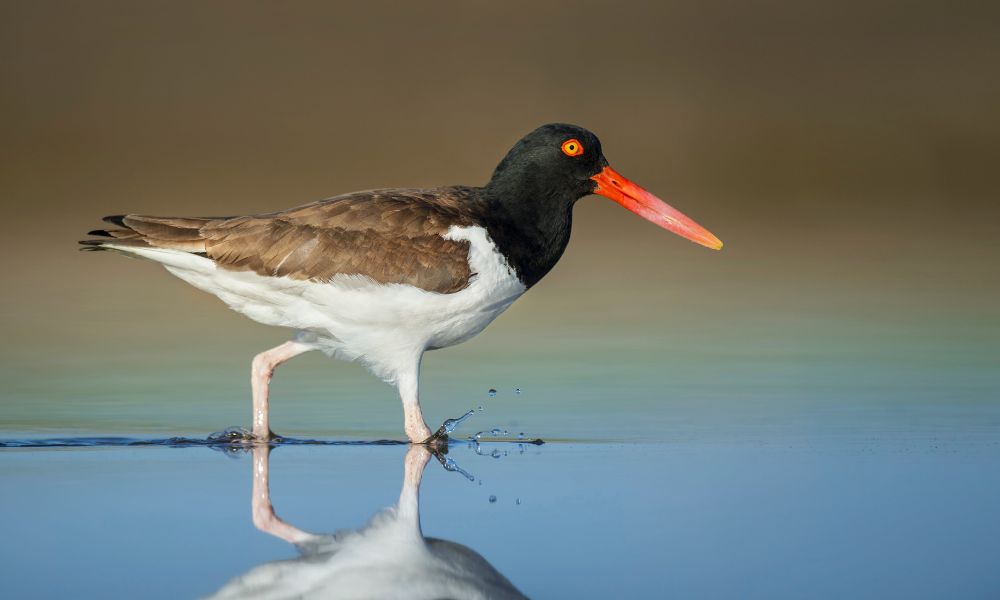
The American oystercatcher, also known as the American pied oystercatcher, is a bird species belonging to Haematopodidae. Originally referred to as the “sea pie,” it was later renamed by naturalist Mark Catesby when he observed the bird’s affinity for consuming oysters.
This striking bird features a black and white body adorned with a long, robust orange beak. Its head and breast exhibit a distinctive black color, while its back and wings are primarily grayish-black. The American oystercatcher possesses a unique ability among its avian counterparts in its environment—it can skillfully pry open large mollusks such as clams and oysters to access their tasty contents.
The American oystercatcher is commonly found along coastal regions of North and South America, where it inhabits sandy beaches, mudflats, and salt marshes. It is a vigilant and vocal species, emitting loud, sharp calls to communicate with its mates or defend its territory. These birds form monogamous pairs and engage in elaborate courtship displays.
Seychelles Bulbul

The Seychelles Bulbul is a passerine bird that belongs to the Bulbul family. This bird species is endemic to the Seychelles islands, particularly found on the islands of Mahe, Praslin, La Digue, and Silhouette. With its omnivorous diet, the Seychelles Bulbul feeds on various food sources, including fruits, flowers, eggs, and insects. It can often be observed foraging for these items among foliage or catching insects during short flights.
Breeding in the Seychelles Bulbul typically occurs during the monsoon season, which spans from October to January. However, it is worth noting that breeding can occur throughout the year in some cases. During breeding, these birds engage in courtship displays and build nests for their offspring.
The Seychelles Bulbul’s presence adds to the Seychelles islands’ unique biodiversity, showcasing the rich avian life in this region. Efforts are being made to protect and conserve the habitats of these birds to ensure their continued presence in the Seychelles ecosystem.
Black Oystercatcher
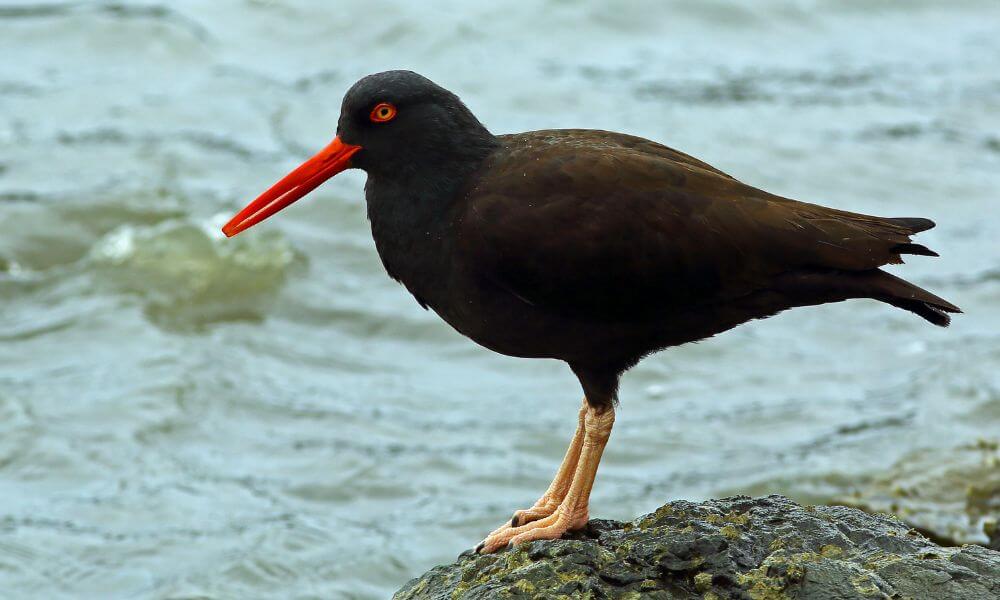
The black oystercatcher, scientifically known as Haematopus bachmani, is a remarkable bird species native to the shoreline of western North America. It is the sole representative of the oystercatcher family in the region and is commonly referred to as the black oystercatcher.
Visually striking, the black oystercatcher displays a predominantly black plumage, while its bill can range from bright red to a subtle orange hue in adult individuals. Its legs are a distinctive shade of pink, complemented by a vibrant yellow iris and a red eye ring. Notably, this bird species boasts a relatively long lifespan, with an average life expectancy of approximately 35 years in the wild.
The black oystercatcher thrives in coastal habitats and is closely associated with rocky shores, intertidal zones, and sandy beaches. Its diet primarily consists of mollusks, particularly bivalves like mussels and clams, which it expertly pries open using its strong bill. The conservation of the black oystercatcher is of significant importance, as it contributes to the biodiversity and ecological balance of its coastal habitats. Efforts are underway to protect and preserve the shoreline environments that are crucial for the survival of this unique bird species.
Ross’s Turaco
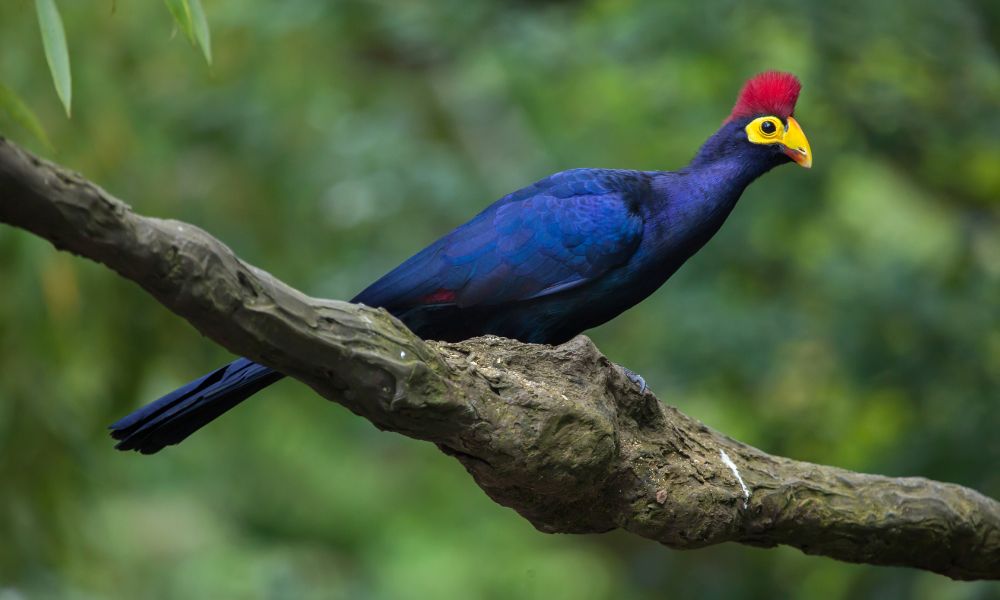
The Ross’s turaco, also known as Lady Ross’s turaco, is a species of bird belonging to the turaco family. It can be found in various African regions, including Angola, Botswana, Burundi, Cameroon, the Central African Republic, the Democratic Republic of the Congo, Gabon, Kenya, Rwanda, South Sudan, Tanzania, Uganda, and Zambia.
This colorful bird is known for its vibrant plumage and striking appearance. The Ross’s turaco primarily feeds on a diet of fruits, flowers, and seeds from wild and cultivated plants.
It typically inhabits woodlands and open forest areas within its range.
The Ross’s turaco can live for approximately 10 to 15 years in the wild, while individuals in captivity may have an extended lifespan of 20 to 30 years. With its unique beauty and presence, the Ross’s Turaco adds to the rich biodiversity of African ecosystems and is a delight to observe for bird enthusiasts and nature lovers alike.
Orange-billed Sparrow

The orange-billed sparrow, scientifically known as Arremon aurantiirostris, is a small bird species that belongs to the Passerellidae family. Its name is derived from its distinctive orange bill, which stands out against its otherwise subdued plumage. This charming bird is primarily found in the tropical regions of Central America, including countries such as Belize, Costa Rica, Guatemala, Honduras, Mexico, Nicaragua, and Panama.
The orange-billed sparrow typically inhabits subtropical or tropical moist lowland forests, where it finds shelter and forages for its preferred diet.
While specific details about its diet may vary, sparrows, in general, are known to feed on a combination of seeds, grains, fruits, and insects. This diverse diet allows them to adapt and thrive in their natural habitat.
With its vibrant orange bill and presence in the lush tropical forests of Central America, the orange-billed sparrow adds a touch of color and beauty to the avian biodiversity of the region. Its unique appearance and melodic song make it a delightful sight and sound for birdwatchers and nature enthusiasts fortunate to encounter it in the wild.
Rhinoceros Hornbill
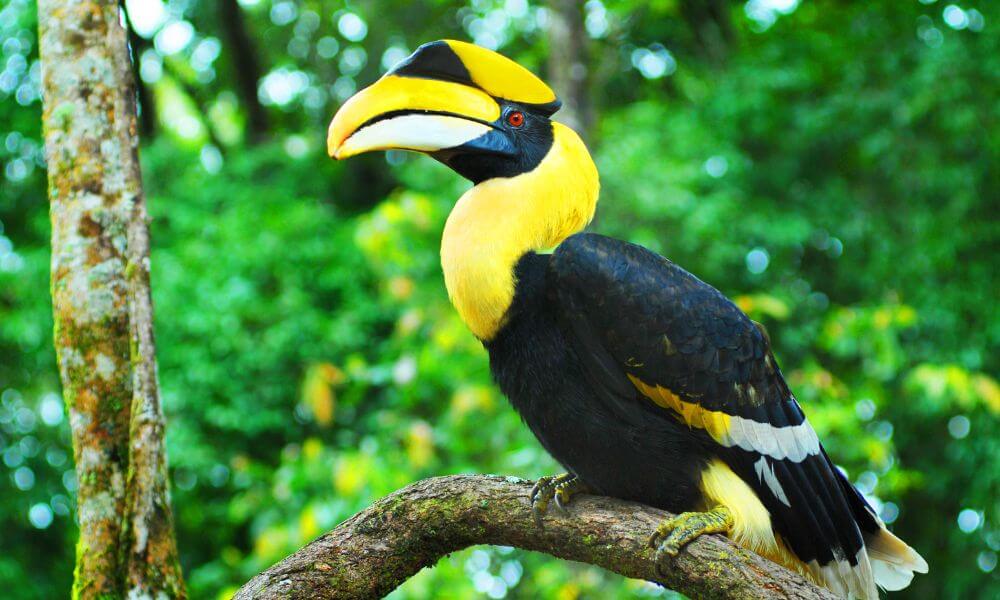
The Rhinoceros hornbill, scientifically known as the Buceros rhinoceros, is the largest forest hornbill species. While its exact average lifespan in the wild remains unknown, individuals in captivity can survive for up to 35 years. These birds thrive in tropical and subtropical regions, particularly in lowland areas. They are commonly found in Borneo, Sumatra, Java, the Malay Peninsula, Singapore, and southern Thailand. Notably, the Rhinoceros hornbill holds the esteemed status of being the national bird of Malaysia.
With its magnificent size and distinctive features, the Rhinoceros hornbill is a captivating sight. It has a massive, curved bill adorned with a prominent casque, adding to its striking appearance. The bill, predominantly ivory-white, contrasts beautifully against its black plumage and white tail feathers. When these hornbills take flight, their wings produce a distinctive whooshing sound.
As omnivores, Rhinoceros hornbills have a diverse diet. They primarily consume various fruits, pluck from trees while perched on branches. Their powerful bill and keen hunting skills enable them to locate and capture prey within their forest habitat. Their diet includes small rodents, insects, and occasionally small birds.
The Rhinoceros hornbill not only captivates with its impressive size and unique features but also symbolizes the rich biodiversity and natural heritage of the tropical and subtropical regions it inhabits. Its status as the national bird of Malaysia highlights its cultural and ecological significance within the region.


